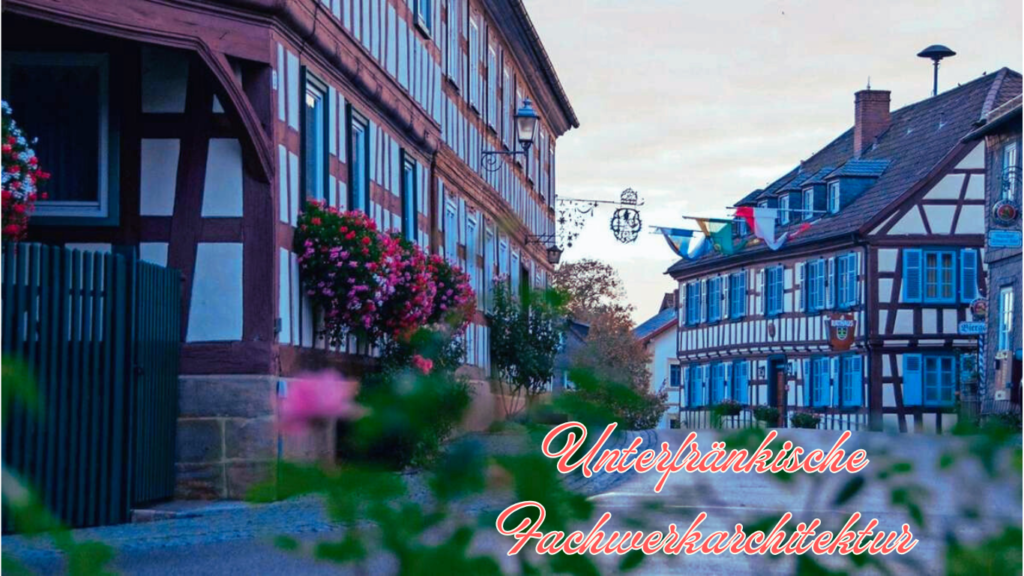Unterfränkische Fachwerkarchitektur, or Lower Franconian half-timbered architecture, is a testament to the rich cultural and historical heritage of Lower Franconia in Bavaria, Germany. Known for its intricate timber framework, this architectural style is celebrated for its aesthetic appeal and practical design. This article explores the fascinating history, distinctive features, and enduring legacy of Unterfränkische Fachwerkarchitektur.
Historical Background
The origins of Fachwerk architecture can be traced back to medieval Europe, where timber framing became a popular construction method. In Lower Franconia, this style evolved to reflect the region’s unique cultural and environmental influences. Gothic and Renaissance elements heavily influenced the designs, resulting in visually stunning patterns and decorations. The fertile lands of Franconia, home to a thriving wine culture, also contributed to the development of this distinctive architectural style.
Key Characteristics
Timber Framework Patterns:
Unterfränkische Fachwerkarchitektur is renowned for its elaborate timber framework designs, including St. Andrew’s crosses, rhomboids, and herringbone patterns. These designs not only add aesthetic value but also provide structural stability.
Materials Used:
Local oak wood forms the backbone of the construction, while the infill typically consists of wattle and daub, bricks, or stone. The contrast between the dark wood beams and lighter infill creates a striking visual appeal.
Decorative Elements:
Decorative carvings, vibrant colors, and motifs such as vines and religious symbols often adorn the beams, showcasing the region’s artistic flair and cultural influences.
Urban vs. Rural Fachwerk
Townhouses:
In cities like Würzburg, Ochsenfurt, and Miltenberg, Fachwerk townhouses stand as proud symbols of the region’s architectural legacy. These urban structures often feature intricate designs and serve as landmarks.
Farmhouses and Wine Presses:
Rural areas showcase Fachwerk farmhouses and wine presses, reflecting the agricultural lifestyle and wine-growing tradition of Lower Franconia. These buildings combine functionality with aesthetic appeal.
Adaptive Uses Today:
Many Fachwerk structures have been repurposed into modern homes, restaurants, and cultural centers, blending historical charm with contemporary functionality.
Famous Examples of Unterfränkische Fachwerk
Altes Rathaus in Ochsenfurt:
The Old Town Hall in Ochsenfurt is a prime example of Unterfränkische Fachwerkarchitektur, featuring intricate patterns and vibrant decorations.
Fachwerk Houses in Marktbreit:
Marktbreit boasts some of the most picturesque Fachwerk houses, showcasing the region’s architectural brilliance.
Hidden Gems:
Smaller villages like Sommerhausen and Dettelbach are home to well-preserved Fachwerk streetscapes, offering a glimpse into the past.
Construction Techniques
Traditional methods of constructing Fachwerk buildings involve crafting a timber skeleton and filling the spaces with wattle and daub or bricks. The precision and craftsmanship required for this technique ensure the structures’ durability. Modern preservation efforts have incorporated sustainable practices, aligning with eco-friendly building trends.
Preservation and Modern Relevance
Efforts to Preserve Fachwerk Buildings:
Local governments and heritage organizations have undertaken extensive efforts to restore and maintain Fachwerk buildings, ensuring their survival for future generations.
Tourism and Cultural Value:
Unterfränkische Fachwerk towns attract tourists from around the world, contributing to the local economy and promoting cultural exchange.
Modern Interpretations:
Contemporary architecture in the region often draws inspiration from traditional Fachwerk designs, blending history with modernity.
Conclusion
Unterfränkische Fachwerkarchitektur is more than just an architectural style; it is a symbol of Lower Franconia’s cultural identity and history. From its intricate timber patterns to its enduring relevance, this architectural tradition continues to inspire and captivate. Visitors to the region are encouraged to explore its charming Fachwerk towns and experience the timeless beauty of this heritage.
Frequently Asked Questions (FAQs)
What is Unterfränkische Fachwerkarchitektur?
Unterfränkische Fachwerkarchitektur refers to the half-timbered architecture found in Lower Franconia, Bavaria. It is known for its intricate timber frameworks, regional materials, and historical significance.
Where can I see Unterfränkische Fachwerk buildings?
Popular destinations include Ochsenfurt, Marktbreit, and Miltenberg, where beautifully preserved Fachwerk houses and town halls can be explored.
What makes Unterfränkische Fachwerk unique compared to other German Fachwerk styles?
This style stands out for its Gothic and Renaissance influences, use of local oak timber, and decorative motifs inspired by the region’s wine-growing culture.
How are Unterfränkische Fachwerk buildings preserved?
Preservation efforts involve careful restoration using traditional techniques and modern sustainable practices, ensuring these structures remain intact for future generations.
Why is Unterfränkische Fachwerk important for tourism?
These historical structures attract visitors worldwide, offering insights into Bavarian culture, architecture, and history, and contributing significantly to local tourism.
Recommended Article:
How to Remove Bleedthrough in IrfanView: A Complete Guide
Nettoyage Vigon Borad Technique: Everything You Need to Know


